Aluminium Composite Panels (ACP) are modern construction materials used extensively for exterior cladding of commercial and residential buildings. ACP consists of two aluminium sheets bonded to a non-aluminium core, typically polyethylene plastic. The panels come with various core thicknesses such as 3mm, 4mm, and 6mm. The aluminium sheets have a coil-coated finish which protects against corrosion and UV radiation. ACP panels are lightweight, rigid, and durable, making them suitable for a wide range of building construction applications.
Post your Requirement
Composition of Aluminium Composite Panel
An aluminium composite panel consists of the following components:
- Protective Film: This top coating provides resistance against dust, external particles, and water. It prevents the surface from getting scratched during handling and installation.
- Paint: The aluminium sheets have PVDF or Polyester paint coatings which offer vibrant colors, patterns and metallic finishes. These coatings are long-lasting and resistant to UV radiation.
- Aluminium Skin: High-grade aluminium alloys like AA3003 and AA5005 are used to manufacture the aluminium sheets. The sheets have thicknesses ranging from 0.5mm to 0.8mm. Aluminium provides rigidity, flatness and strength to the panel.
- Adhesive Film: A thin adhesive layer bonds the aluminium sheets firmly to the plastic core. The adhesive provides excellent adhesion and long-term durability.
- Plastic Core: The core material is typically Low-density Polyethylene (LDPE) which provides stiffness and rigidity to the ACP panel. Other core materials like FR (Fire Retardant) and Mineral Core are also used.
Features of Aluminium Composite Panels
Some of the notable features of ACP panels are:
- Weather Resistant: ACP panels can withstand harsh weather conditions like rain, snow, and wind. The aluminium skin provides a protective barrier against moisture.
- Lightweight: Due to the plastic core, ACP panels are very lightweight, making handling and installation easy.
- Flatness and Rigidity: The bonded aluminium sheets provide excellent flatness and rigidity which is important for cladding applications.
- Fire Performance: Based on the core material ACP panels have different fire ratings. FR core panels are difficult to ignite and prevent flame spread.
- Easy to Clean: ACP panels can be easily cleaned using water and mild detergents. Their surface does not allow dirt accumulation.
- Aesthetics: ACP panels are available in attractive colors, textures and patterns. They provide modern and stylish facade designs.
Advantages of Aluminium Composite Panels
ACP panels offer the following benefits:
- Cost Saving: ACP cladding provides faster installation and lower labor costs due to lightweight panels which require smaller supporting structures. This results in overall cost savings.
- Low Maintenance: The durable aluminium skin of ACP panels resists dirt accumulation and requires very low maintenance.
- Resists Corrosion: The aluminium skin provides excellent corrosion resistance which maintains the appearance of the panels for long durations.
- Design Flexibility: ACP panels can be cut and bent into different shapes to provide innovative and complex facade designs.
- Sustainable: Aluminium and plastic core materials are recyclable thereby supporting sustainability goals. Some ACP products also contain recycled aluminium.
ACP Sheets Installation
Proper installation according to manufacturer’s guidelines is important to achieve safety and performance. The key steps are:
- Surface Preparation: The cladding substrate must be even, smooth and structurally stable. Uneven surfaces can prevent proper panel alignment.
- Measure and Mark: Precisely measure the area for cladding and mark for cutting panels. Planning avoids wastage.
- Cutting Panels: Use electric saws to cut the panels as per dimensions. Carbide or diamond-tipped blades provide neat and chip-free cuts.
- Fixing Method: ACP panels are installed using mechanical fixing, adhesive fixing or a combination. Mechanical fixing involves using anchors, rivets, and screws. Adhesive tapes provide strong bonds between the panel and sub-frame.
- Sealants and Gaskets: Sealants and gaskets must be applied at joints and openings to prevent moisture ingress and air leakage. They enhance weatherproofing.
- Safety: Wear appropriate PPE including gloves, goggles, masks, and safety shoes when handling ACP panels and during installation.
Applications of Aluminium Composite Panels
ACP panels are extensively used for:
- External building facades
- Building renovations and retrofits
- Wall cladding and partition walls
- False ceilings
- Interior surfaces
- Modular housing
- Signage and billboards
- Marine applications like ship hulls and offshore platforms
The versatility, aesthetics, and performance of ACP panels make them a popular choice for modern construction requirements.
ACP Sheets Vs HPL Sheets
HPL (High-Pressure Laminates) sheets are also used for building exteriors along with ACP panels.
- Composition: While ACP consists of aluminium bonded to a plastic core, HPL sheets comprise resin-impregnated cellulose layers bonded under heat and pressure.
- Durability: ACP panels retain color and finish longer when exposed to weathering due to the coil-coated aluminium skin. HPL is also durable but may fade eventually under UV exposure.
- Strength: ACP panels have a higher strength and stiffness-to-weight ratio compared to HPL sheets. The aluminium provides better rigidity.
- Fire rating: Standard quality HPL sheets have a better reaction to fire compared to standard ACP. However, FR core ACP panels meet strict fire codes.
- Fabrication: ACP panels can be fabricated into various 3D forms and bent for creative designs. HPL sheets offer relatively less flexibility.
- Cost: Low-end ACP panels are more economical. High-quality ACP panels with advanced coatings and mineral cores can be more expensive than good-quality HPL.
- Recyclability: Both ACP and HPL offer good recyclability with proper processes. However, certain grades of thermosetting resins in HPL can reduce recyclability.
Thus, for building projects, ACP panels and HPL sheets have their practical advantages and limitations. The choice depends on factors like budget, appearance, fire codes, and fabrication needs. Procuring products from reputed manufacturers ensures high quality and compliance with regulations.
FAQs
Q-1. What is the core material typically used in ACP sheets?
A-1. The core material typically used in ACP sheets is polyethylene (LDPE) plastic which provides rigidity and stiffness to the sheet.
Q-2. Do ACP sheets come with special coatings?
A-2. Yes, the aluminum layers in ACP sheets have coil-coated PVDF or polyester paint finishes which protect against corrosion and provide resistance to UV radiation.
Q-3. Are ACP sheets suitable for humid climates?
A-3. Yes, ACP sheets are weather and moisture-resistant due to the protective aluminium skin and can withstand humid climates very well.
Q-4. Can ACP sheets sustain their appearance over long durations?
A-4. Yes, ACP sheets are very durable and can retain their color, gloss, and finish for many years due to the high performance coil coated aluminium skin.

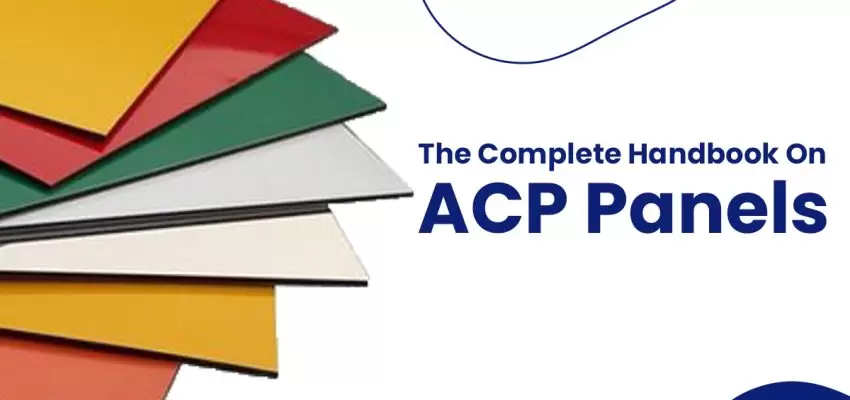
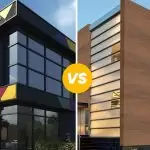
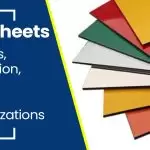
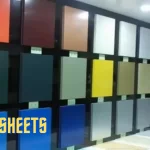
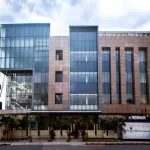

















Post A Comment